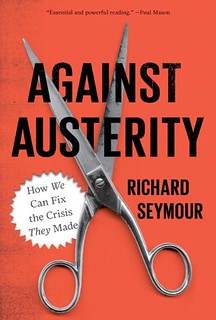Sunday, June 08, 2008
The American Working Class posted by Richard Seymour
Michael Yates:We don’t have time today to discuss all the various control tactics used by employers: the herding of workers into factories, the detailed division of labor, mechanization, Taylorism, personnel management, lean production—all of which deny workers their humanity, their capacity to conceptualize and carry out their plans, to actually “own” what they make. However, let us look at a sampling of jobs in modern America:
Auto workers: There are about 1.1 million auto workers. Not only are they facing rapidly rising insecurity, they are also confronted every day with a work regimen so Taylorized that they must work fifty-seven of every sixty seconds. What must this be like? What does it do to mind and body? In this connection, it is instructive to read Ben Hamper’s Rivethead (1992), a startling account of working in auto plants. Hamper worked in an old plant, where the norm was about forty-five seconds of work each minute. He eventually got a job in a new, “lean production” facility. He called it a “gulag.” In her book, On the Line at Subaru-Isuzu (1995), sociologist Laurie Graham tells us about her work routine in one of these gulags. Below, I have skipped a lot of the steps, because I just want to give readers a sense of the work. Remember as you read it that the line is relentlessly moving while she is working:
1. Go to the car and take the token card off a wire on the front of the car.
2. Pick up the 2 VIN (vehicle identification number) plates from the embosser and check the plates to see that they have the same number.
3. Insert the token card into the token card reader.
4. While waiting for the computer output, break down the key kit for the car by pulling the 3 lock cylinders and the lock code from the bag.
5. Copy the vehicle control number and color number onto the appearance check sheet....
8. Lift the hood and put the hood jig in place so it will hold the hood open while installing the hood stay....
22. Rivet the large VIN plate to the left-hand center pillar.
23. Begin with step one on the next car.
This work is so intense that it is not possible to steal a break much less learn your workmate’s job so that you can double-up, then rest while she does both jobs. Within six months of the plant’s start-up, a majority of the workers had to wear wrist splints for incipient carpal tunnel. Necks and backs ache from bodies being twisted into unnatural positions for eight hours a day. Supervisors recommend exercises and suggest that workers who cannot deal with the pain are sissies.
What is true for auto workers is true for all who do this type of labor—whether it be in beef processing plants or on chicken disassembly lines where workers labor with slippery blood and gore on the floor and on their bodies. And where cuts lead to infections and disease.
Clerks: There are about 15 million clerks in the United States. Many years ago I was on a television show with former secretary of labor Robert Reich. In response to my claim that a lot of the jobs being created were not all that desirable, he said that there were a lot of good jobs available, ones in which workers had a real say about their jobs (no doubt referring to the “quality circles” so popular then). One such job was that of “clerk.” I blurted out in a loud and incredulous voice, CLERKS! I suggested that perhaps Mr. Reich had never noticed the splints on the wrists of many clerks, signs of epidemic carpal tunnel syndrome. Since that time, I have actually worked as a clerk, at the Lake Hotel in Yellowstone National Park. I describe the experience and what I learned in my book Cheap Motels and Hot Plate: An Economist’s Travelogue. Clerks work long hours; they are on their feet all day; they take regular abuse from customers; they are exposed in full view of supervisors with no place to hide; they are accorded no respect (think about customers on cell phones in grocery lines); their pay is low; their benefits negligible. After a hard day at the front desk, I only wanted a few drinks and a warm bed. The stress level was extraordinary.
Restaurant Workers: There are 11 million of these, growing in number every year. Next to personal care and service workers, those who prepare and serve our food are most likely to experience a “major depressive episode.” Restaurant workers in Manhattan’s Chinatown log as many as one hundred hours a week, for less than minimum wage. The pace of the work, the pressure of it are unbelievable. Check out the arms and legs of a kitchen worker. They are full of cuts and burns. Substance abuse is widespread.
Secretaries, Administrative Assistants, and Office Support: These workers are 23 million strong. They are poorly paid, many in sick buildings, stuck in badly designed chairs, staring at computer screens for hours, taking orders all day long (usually women from men), and often heavily Taylorized. These workers, whose working conditions are satirized so skillfully on the television series The Office, have to contend with daily degradations, including all too prevalent sexual harassment. Here is what my sister said about her work:I, too, share some of your fears and anxieties. As one of the administrative assistants you talk about, I can relate to the long days of sitting at the typewriter (in years past) and now at the computer. I am sure that is the cause of my neck and shoulder pain and the many headaches from which I suffer. Although I basically like my job and the people with whom I work, after thirty years I am anxious to move on to something else. I look forward to retirement in about three to four years, moving to the city, maybe working part-time, and finding meaningful things in which to participate.
Security workers: Three million men and women watch over others in prisons, malls, gated communities, in occupied Iraq, and on our city streets. This is a type of work guaranteed to be stressful and to generate not only an extremely jaundiced and pejorative view of the rest of society but also an extreme, macho personality, prone to violence.
Custodial workers: There are 4 million building and grounds workers, many of them immigrants, keeping our buildings clean and the grounds swept and manicured. Often they are hired by contractors who are themselves employed by the buildings’ owners. It has taken monumental efforts by the SEIU to organize some of these exploited workers, who must often labor in close proximity to dangerous cleaning fluids, solvents, and chemical fertilizers.
Medical workers: There are more than 13 million people laboring in our hospitals, surgicare centers, and nursing homes, as well as in individual residences. With the exception of those at the top, including health care administrators and most of the physicians, health care is a minefield of poor working conditions. Even nursing has been degraded and deskilled so much that the nursing shortage could be nearly filled simply by the return of disaffected nurses to their profession. At the request of the California Nurses Association, I spoke this summer to nurses in four Texas cities. I heard many tales of woe: sixteen hour days, two weeks straight of twelve-hour days, insane patient loads, constant cost-cutting that damages patient health, demeaning treatment by administrators, etc. Conditions only worsen as one goes down the health care occupation ladder.
Labels: american working class, dead labour, work










